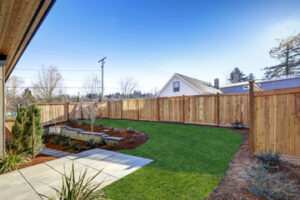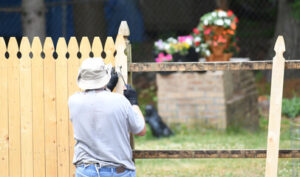Fence Company Lansing MI is one of many businesses benefiting from the trend toward home improvement and remodeling. In fact, the industry is expected to grow even further as homeowners continue to focus on improving their homes.

Does the fence company provide estimates in a timely manner? That’s important information that customers need to know right away.
Before you start a Fence Company, it’s important to make a plan. This will help you determine the specifics of your business, as well as uncover any potential issues. You’ll also want to think about how you will market your new business.
Once you have a plan, it’s time to start preparing your business for launch. This includes creating a legal entity and obtaining the proper licenses and insurance coverage for your business. Depending on your state’s laws, you may need to obtain a contractor’s license, an Occupational Safety and Health Administration (OSHA) permit, or a general business license. You’ll also need to have liability insurance to protect yourself in the event of an accident or injury.
Another step is to find and hire qualified employees for your fencing business. This can be a difficult process, but it’s vital for the success of your business. Take your time and carefully review resumes before making an offer. It’s also a good idea to post your job listing on online job boards, such as Indeed and LinkedIn. Make sure to include the required qualifications, a description of the work, and your compensation package in the posting.
Next, it’s time to create a marketing and advertising plan for your Fence Company. This will include identifying your target audience, determining the type of fencing work you will offer, and setting up pricing options for clients. Creating a website and social media profiles will also be helpful in promoting your business.
You should also consider joining your local chamber of commerce, attending community events, and networking with other small business owners. These connections will provide valuable information about the current and future business landscape in your area.
A great way to find potential customers is by creating a search engine optimized (SEO) website that’s easy for people to navigate and book services with. You should also list your business on local services directories like Google My Business and Bing Places, as well as lead generation websites for contractors, such as Angi and Thumbtack.
Finally, it’s a good idea to require all clients to sign a service agreement before you start working on their project. This will clarify payment terms and conditions and set customer expectations, reducing the risk of disputes down the road.
Financing
A fencing business requires startup capital to pay for materials, labor, permits, and other costs. You also need to apply for a contractor’s license, secure a business tax permit, and have general liability insurance to protect your business in case of injuries or property damage during a fence installation project. A good way to cover these initial expenses is by applying for a title loan or another type of short-term financing. It is also important to set up a bank account for your business and get a credit card so you can make payments on time.
There are a number of options for fence financing, and some are easier to qualify for than others. Personal loans are a common option that you can use to finance your new fence company. You can find personal loans for almost any purpose, and they often offer competitive annual percentage rates (APRs). You can even find a personal loan with no credit check, but the approval amounts and interest rate may be much lower. Another type of fencing financing is a home equity loan, which works like a second mortgage and lets you borrow against the equity that you have built in your house. This is more dangerous than other types of fencing financing because your home could be at risk if you fail to meet your loan payments.
Some retailers that sell fencing products also offer financing. This can be a convenient option for homeowners because it helps them avoid paying the full cost of their new fence upfront. However, it’s important to read the fine print carefully because some retailer fencing financing offers can carry high interest rates.
You can also consider purchasing a fencing franchise, which can help you get off the ground faster with a well-established brand and marketing support. But keep in mind that franchises are expensive and can cost upwards of $35,000 just for the initial franchise fee. In addition, a franchise may require you to follow their specific business model, which can limit your flexibility and ability to innovate.
Insurance
A fence installation contractor business typically has a variety of insurance options available to it. General liability insurance is one of the most important coverages, as it provides protection in the event that someone is injured or their property is damaged by your company’s work. It also protects the company from costly legal proceedings. Many general liability policies can have additional coverages added on to meet the specific needs of a fencing contractor business, including workers’ compensation, products and completed operations and professional liability.
Another type of insurance to consider is commercial property insurance. This type of policy covers the equipment, furniture and other assets owned by a fencing contractor business. It can be a very affordable option, and it provides peace of mind in the case that a storm damages your fence materials or an employee accidentally breaks a client’s computer. In addition to protecting your equipment, commercial property insurance can help cover the expenses associated with relocating your business after a disaster.
If you’re unsure about the types of coverage your fencing contractor business requires, be sure to ask for references from other fencing companies in your area. This will give you an idea of the quality of work produced by each fencing company and can be helpful in choosing a company to work with. Additionally, be sure to check a fencing company’s Better Business Bureau rating and reviews on websites like Angi.
It’s also worth considering getting a business owners policy (BOP). This type of insurance plan can have coverage added on that fit the specific needs of a fencing contractor business, such as loss control services and property coverage.
For instance, if your fencing company’s office or warehouse is destroyed by fire, a BOP can provide assistance with the costs of renting temporary space and relocating your fencing materials. It can even help pay for lost income if you’re forced to close your business due to damage to your primary location. Other coverages that can be included in a BOP include tools and equipment coverage, business interruption, workers’ compensation and errors and omissions.
Marketing
Developing effective marketing strategies is a critical step for fence companies looking to distinguish themselves as the go-to fencing contractors in their area. With a number of competing businesses vying for attention in their service areas, it’s important to utilize a mix of online and offline marketing tools to build brand awareness and capture a share of the market.
One of the most effective marketing options for fence companies is to encourage word-of-mouth referrals by offering customers a discount or other incentive for recommending the company to their friends and family. This is a low-cost marketing strategy that can be easily implemented by simply adding a “refer a friend” button on your website or asking satisfied clients to leave a review or recommendation on social media.
Another way to grow your client base is by running paid advertising campaigns on digital platforms like Google. Pay-per-click (PPC) ads allow you to target local customers who are actively searching for fence services in your area, and they can provide a quick source of qualified leads.
To maximize the effectiveness of these campaigns, it’s crucial to invest in creating a compelling unique value proposition and clearly define the benefits your fence installation company offers. This will help potential customers identify with the brand and understand how it is different from the competition. Having clear goals and measurable metrics will also help fence firms evaluate the success of their marketing efforts.
In addition to paid ads, fence companies can also boost their online visibility by optimizing their websites and claiming their business listings on popular search engines and directories. A well-optimized site is more likely to rank higher in search results, making it easier for potential customers to find and navigate to the company’s website.
Finally, print and direct mail marketing campaigns can be a cost-effective way to reach local audiences and build brand awareness. Using targeted demographics, well-written copy, and eye-catching design, fence companies can create brochures, flyers, magazine ads, and postcards that deliver a strong return on investment.
It’s also worth branding your company vehicles with logo decals or vinyl wrapping. This is a cost-effective and effective way to advertise while traveling to and from jobsites, and it will help potential customers recognize your brand right away.
